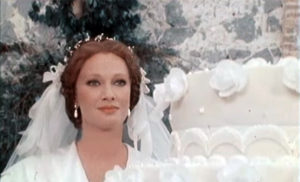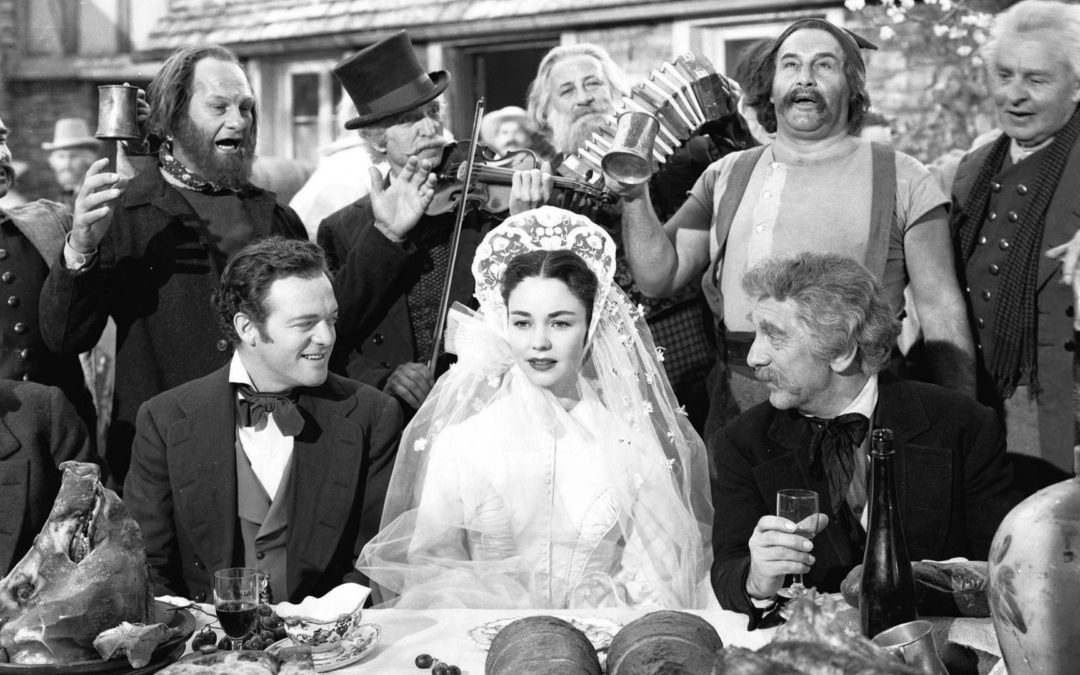Flaubert’s Madame Bovary is attack on the French bourgeoisie’s crudities and lack of taste. A pivotal moment occurs at Emma Rouault’s wedding party, a vaguely picnicky outdoor event. The party foreshadows Emma’s disastrous relationship with Charles Bovary. What ought to be a happy affair, Flaubert purposely turns topsy-turvy.
In her dreams, Emma would have “preferred to have a midnight wedding with torches,” but the reality is otherwise. The dinner is served picnic-style in the afternoon affair under the shade of the cart shed in the barnyard. Without wait staff, forty-three guests carouse for “sixteen hours at the table, began the next day again, and to some extent on the days following.” Often very drunk, they eat with gusto, devouring “four sirloins, six chicken fricassees, stewed veal, three legs of mutton, and in the middle a fine roast suckling pig, flanked by four chitterlings with sorrel,” decanters of brandy and sweet cider. But most audacious is a large Savoy cake decorated to resemble a temple on several levels, using “candied angelica, almonds, raisins, and quarters of oranges; and finally, on the upper platform, a green field with rocks set in lakes of jam, nutshell boats, and a small Cupid balancing himself in a chocolate sing whose two uprights ended in real roses for balls at the top.”
This cake symbolizes ostentatious lousy taste, which the Rouault family is stellar. Emma never recovers.

Emma’s vacant stare. Daniel D’Anza’s Madame Bovary (1978). Carla Gravina as Emma Bovary.
Featured Image: The Happy couple surrounded by well-wishers. Vincente Minnelli’s Madame Bovary (1949).
See Gustave Flaubert. Madame Bovary: Provincial Manners. Translated by Eleanor Marx-Aveling. London: Vizetelly & Co., London 1886; Vincente Minnelli. Madame Bovary (1949). The screenplay by Robert Ardrey is based on Gustave Flaubert’s novel (1856), Daniel D’Anza. Madame Bovary (1978). The screenplay is by Fabioa Carpi, Daniele D’Anza, Luigi Malerba, Biagio Priette is based on Flaubert’s novel (1856).

